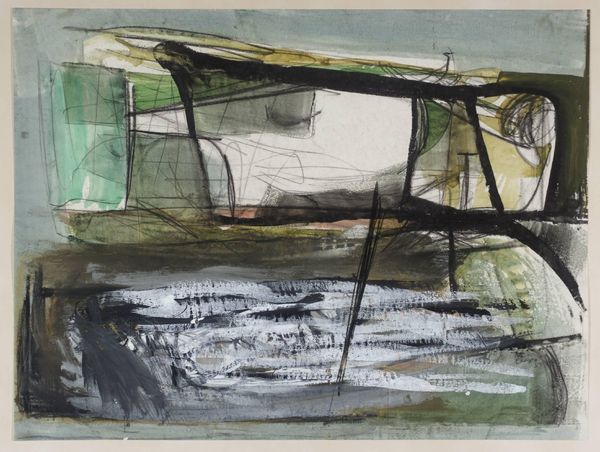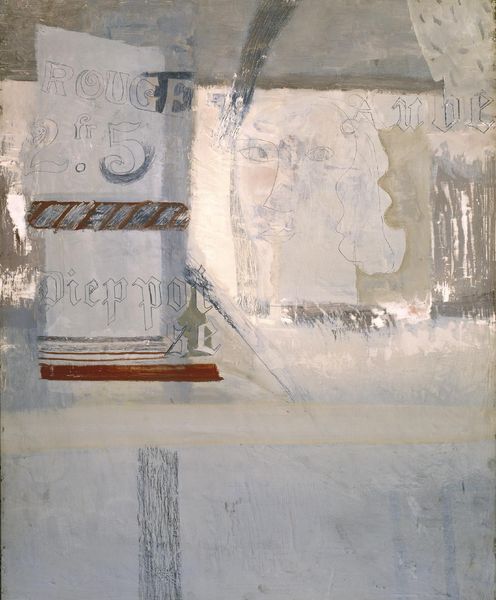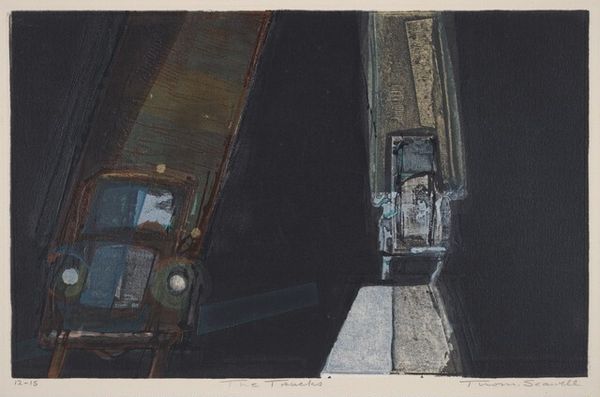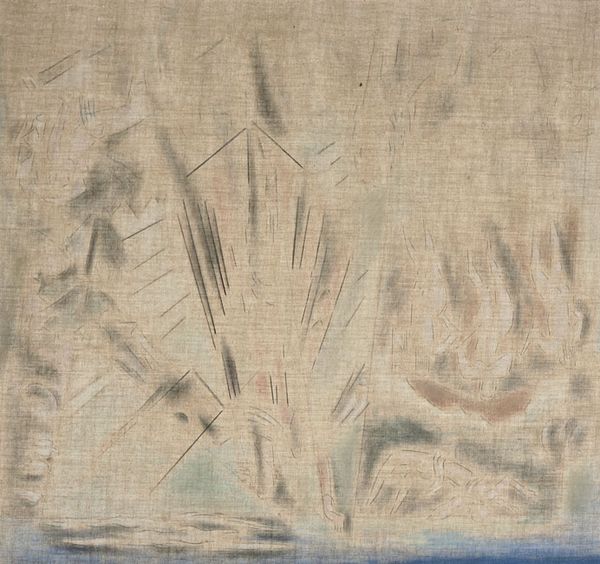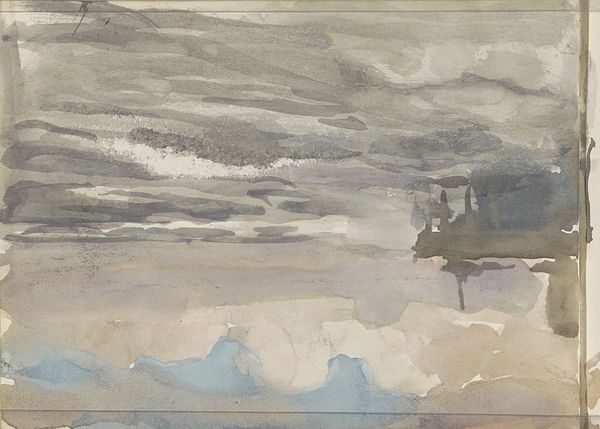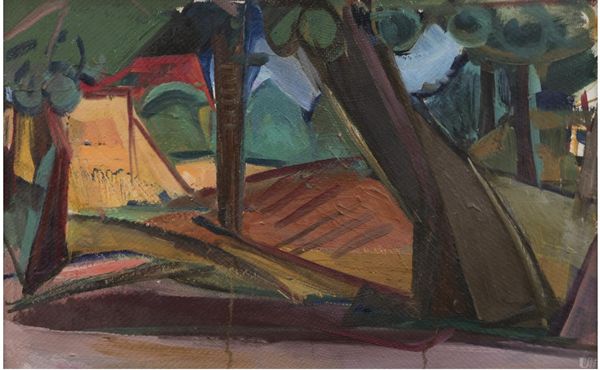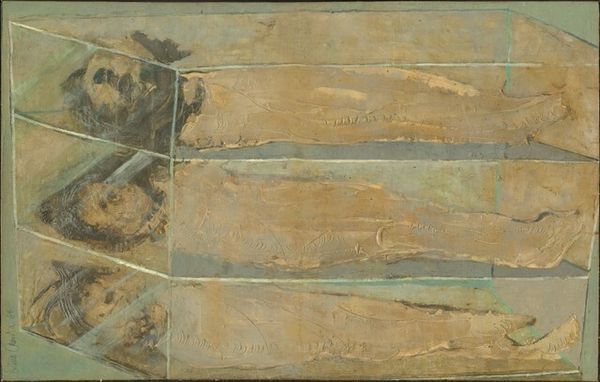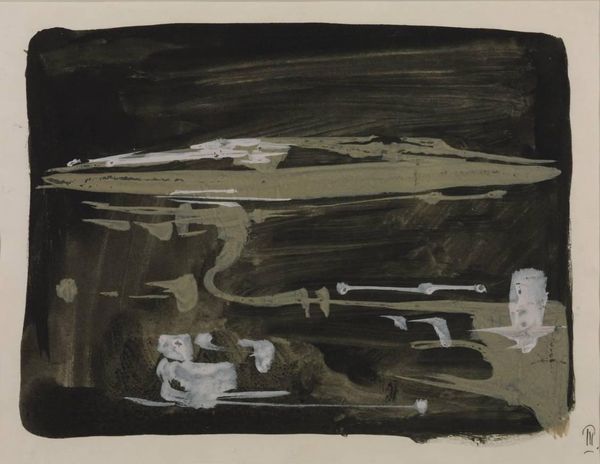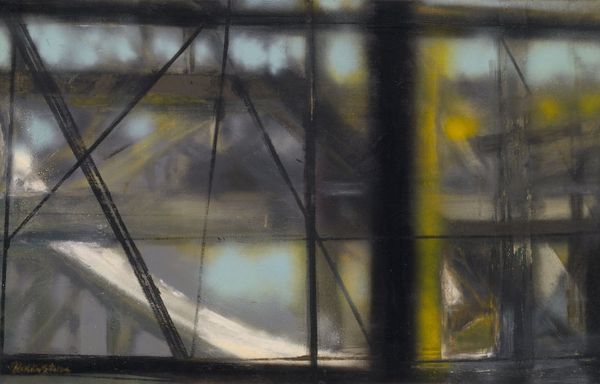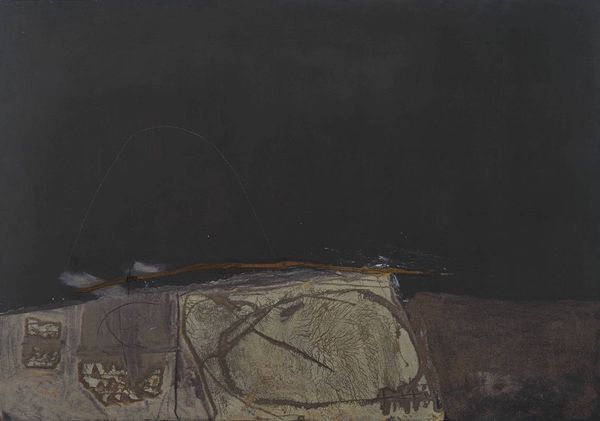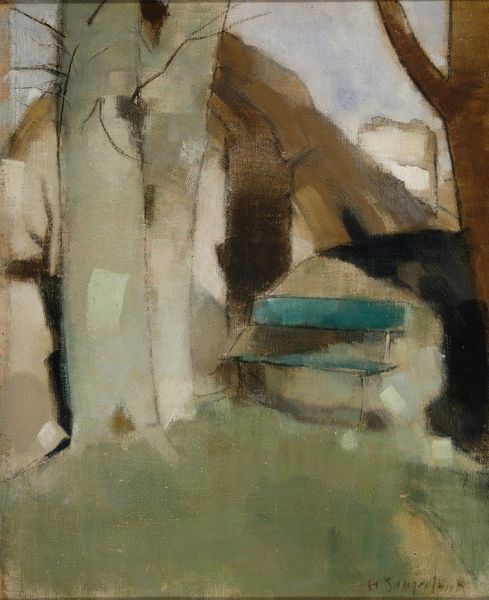
drawing, watercolor, pencil
#
drawing
#
landscape
#
charcoal drawing
#
watercolor
#
intimism
#
pencil
#
watercolor
#
realism
Dimensions: overall: 47 x 70 cm (18 1/2 x 27 9/16 in.) framed: 66.4 x 89.5 x 7 cm (26 1/8 x 35 1/4 x 2 3/4 in.)
Copyright: National Gallery of Art: CC0 1.0
Curator: Andrew Wyeth created this compelling piece, "Wind from the Sea," in 1947 using watercolor, pencil, and charcoal. Editor: My initial response is one of confinement mixed with yearning. The tattered curtains, the stark window frame... It's as if we're trapped indoors, desperately seeking connection with the expansive world just beyond the glass. Curator: Precisely! Notice how Wyeth masterfully juxtaposes textures. The coarse grain of the window frame contrasts with the ethereal, almost translucent quality of the lace curtains. And see how the external landscape is framed by these compositional choices? Editor: That window operates as a liminal space between interiority and exteriority, suggesting boundaries and barriers that exist not only within domestic spaces but within societal structures as well. Consider the limitations placed on women during the late 1940s: confined to the home, their agency curtailed. Is this an allegory? Curator: One could certainly interpret it that way. However, I find it more intriguing to explore Wyeth’s treatment of light. The light diffuses softly through the curtains, almost veiling the external world in a dreamlike haze, and creates these wonderful compositional contrasts. It guides our eye and illuminates those areas. The tonality in the artwork moves between high contrast to blended. Editor: I can’t help but connect it to broader post-war anxieties of domesticity versus independence, and also to the subtle ways the female gaze challenges the traditionally masculine landscape genre. Does that vista represent liberation or a return to conventionality? The semi-transparent veiling seems to speak directly to the challenges of accessing visibility in either case. Curator: Indeed, Wyeth creates tension by presenting two distinct visual planes: the close foreground of the interior with this curtain which has a visual language completely separate from the tonal uniformity of the field with only a small copse of trees. The curtains have very intricate detailed linework creating many subpatterns, versus the flat wash of the field. Editor: I leave contemplating how Wyeth captured such profound psychological resonance within what appears, at first glance, a simple scene. It shows the world beyond while also pointing out restrictions based on one's personal identity. Curator: A work like "Wind from the Sea" displays an arrangement of shape and form that makes for an immersive study of composition and atmosphere.
Comments
No comments
Be the first to comment and join the conversation on the ultimate creative platform.

